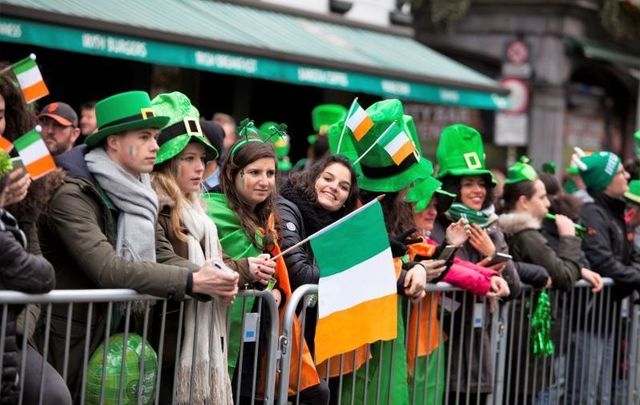The History of St. Patrick’s Day
Photo by: Frances Mulraney
The story behind who St. Patrick really was and the origin behind this holiday is explored in this article.
Have you ever wondered why we wear green, throw parades, and decorate with three-leaf clovers and leprechauns on March 17 each year? St. Patrick’s Day is often thought of as a day of celebration, but the origin of the holiday is actually quite violent. It’s an Irish holiday that was created to commemorate the death of St. Patrick, the patron saint of Ireland. Today, it’s a day to celebrate Irish culture with parades, food, dancing, heavy drinking, and an overload of green.
There’s an old legend that St. Patrick was responsible for ridding Ireland of snakes before his death in 460 A.D., which is one of the reasons it’s thought that he has his own holiday. However, “scientific evidence is pretty clear snakes have never existed in Ireland at all,” as maintained by World Religion News. Though the myth has been debunked, it still lives all over the internet.
What’s surprising is that St. Patrick wasn’t even from Ireland. According to Star Tribune, he was “not a pip-pip, cheerio Brit, but a lad in fifth-century Britain who was kidnapped by Irish raiders.” After several years as a slave in Ireland, he escaped and traveled home, which is where he found religion.
He ended up returning to the country that enslaved him in an attempt to convert people to Catholicism. It’s important to note that “Ireland was not a safe place in the 5th century. There were dozens of warlords fighting each other, and a man walking around trying to convert people would constantly be under threat of violence,” as maintained by World Religion News. So, why would St. Patrick return to such a place?
St. Patrick claims he had a vision that convinced him to travel back to Ireland. In St. Patrick’s own recount of the vision, he claims “as I began the letter, I imagined in that moment that I heard the voice of those very people who were near the wood of Foclut, which is beside the western sea—and they cried out, as with one voice: We appeal to you, holy servant boy, to come and walk among us,” as maintained by Celtic Jewelry.
While he had good intentions, in truth, St. Patrick was far from being a saint. “He was prone to violent outbursts, was known for being tough, and was like firebrand to his followers,” as stated by World Religion News. So why did a holiday celebrating his death become so popular?
By the seventh century, about three centuries after his own death, St. Patrick was considered to be the patron saint of Ireland. “Though he baptized thousands of people, ordained priests who would lead Christian communities and even converted sons of kings, he was also robbed, beaten and put in chains,” as stated by Celtic Jewelry. The significance of St. Patrick’s bravery is what contributed to the creation of St. Patrick’s Day.
The first parade celebrating St. Patrick was held in New York by Irish soldiers to protest for Irish independence. “The New York St. Patrick’s parade would continuously be linked to Irish independence,” as maintained by World Religion News. That is the reason the holiday became known globally, and continues to be celebrated today.
While the holiday’s true meaning has been widely forgotten, knowing about St. Patrick Day’s history makes it more meaningful. The holiday celebrates a brave man who faced adversity, and Irish independence. While you celebrate St. Patrick’s day this year, think about why the holiday was created and what it represents.


